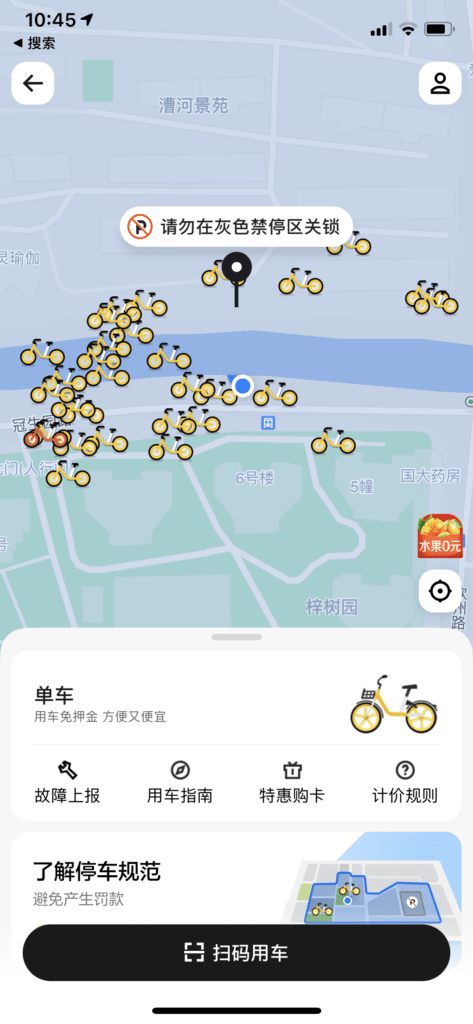In A City is Not a Computer, Shannon Mattern brought up again the big question mentioned by almost every urban designer, planner, and scholar before: how do cities function, and how can they function better? She narrowed down the issue to a more common life angle: how can cities help more of their residents be happy and reach their potential? For the last few decades, cities have highly adept at sharing and copying innovations to improve the transportation scheme. From bus rapid transit to public bike-sharing, the practices of smart-city innovations have surged on to the global stage. Now when I walk along the streets, I often see shared bikes neatly arranged beside the sidewalks. With simple scanning, people could easily unlock a bike and ride it to finish the last part of their commute. After the failure of Moby, the shared bike system is more mature and does not need the payment of a deposit. I can’t help wondering: do shared bikes make our city functions better?

Shared Bikes in New York
The number of bike-sharing programs globally doubled between 2014 and 2018, while the number of bikes increased twenty-fold. In 2019, there were over 17 million shared bikes in use, and about 10 million of them in China. Shanghai is definitely a big market for bike-sharing programs. During peak hours in congested places, shared bikes can provide a faster, cheaper way from A to B versus sitting in a cab or car in traffic. Also, considering the complete and developed public transit system in Shanghai, most office workers choose to commute by subway or bus, and the shared bikes become a great solution to “the last one-mile” problem. It also began to be recognized as an effective tool to reduce air pollution, travel costs, and fossil fuel dependency while improving public health. When urban areas grow denser, space will be at a premium – shared bikes take up less space, besides, making cities look much more vibrant, cool, cosmopolitan, and eventually, “smarter”.
The market for bike-sharing has returned to rationality. The collapse of OFO, Moby, has made the remaining bike-sharing enterprises realize that it is unsustainable to rely solely on increasing the amount of investment to compete for market share. At that moment, the big giant Meituan entered into the red sea. Meituan didn’t aim at the profits created by the sharing bikes industry but aims at the flow of the population brought by it. Users could not use Meituan’s shared bikes from the entrance of WeChat or Alipay, they have to download the Meituan app to use it. In this way, Meituan expanding the number of users and gathers their information. In addition, due to the creation of the complete location-based service (LBS) ecosystem, Meituan e-bikes have also become an important part of the LBS ecosystem, including online car-hailing, bus, unmanned distribution, etc. It’s time to reflect on how the commercial giants play their roles in the constructing of modern transportation infrastructure and creating the notion of smart cities.

Meituan App Interface of Shared Bikes
If you are interested in this topic, have a glance at the related mapping project of shared bikes: in 2010, Oliver O’Brien, a researcher at the Department of Geography at UCL (University College London) working with digital cartography and data visualization, created a Bike Share Map. Updated in real time, the map shows the location of bike share stations in 150 cities across the world, and has become one of the easiest ways for users to get updated on information on their local bike programs: https://bikesharemap.com/#/2.7200000000000006/-64.3676/19.7982/
Read more about this topic:
How and When E-bikes can help Smart Cities: https://www.urenio.org/2018/11/28/how-and-when-e-bikes-can-help-smart-cities/
Why E-bikes are at the Forefront of Future Urban Mobility: https://na.panasonic.com/us/trends/why-e-bikes-are-forefront-future-urban-mobility
Leave a Reply